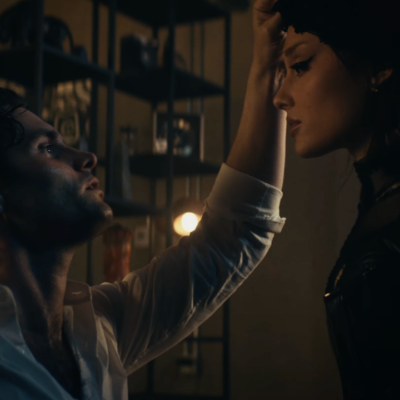Catrinas, the artsy skeleton figurines made in ceramic, clay, and other materials have become an extraordinary hallmark of Mexican popular culture, one that reflects Day of the Dead traditions in particular and which also tells a history dating back over a century.
The ‘elegant skull’ conceived by a Mexican engraver
The character on which La Calavera Catrina —“The elegant skull”— is based was conceived by Mexican engraver José Guadalupe Posada. The original Catrina was titled La Calavera Garbancera: in the form of an artistic etching in zinc, composed for use as political satire around 1910 intended to poke fun at a certain social class of Mexicans who the artist portrayed as having European-aristocratic aspirations—thus the Catrina’s archetypal grandiose plumed hat of a style that passed through a period of high fashion in Europe during that age.
Diego Rivera’s mural
La Calavera had to wait nearly four decades following its debut before becoming ingrained in popular culture. It was in the late 1940s that Diego Rivera’s mural, Sueño de una tarde dominical en la Alameda Central —that illustrates four centuries of Mexico’s key characters including Rivera himself, Posada, and Frida Kahlo— that gave Posada’s satirical character exposure and notoriety, as well as the moniker La Calavera Catrina by which the original character is still known and referred to today.
Sought-after art and national fair
Las Catrinas have since developed a keen cultural following across Mexico, and the figurines have become an established form of art here. Today, artful, elegant and sometimes elaborate Catrinas are recreated by artisans using a variety of materials including ceramic, wood, crepe paper, papier-mâché, clay, resin, compressed sugar, and chocolate. The intricate detail of each sculpture as well as its paint and final decorative detail is all-important, and some meticulously-crafted Catrinas can fetch high prices in art galleries.
The colonial city of Aguascalientes, birthplace of José Guadalupe Posada, celebrates Las Catrinas at its national fair, where an enormous statue of a Catrina is put on display, as well as hosting an annual festival that features music, costumes, dance, and artwork related to celebrating the culture and history of the La Calavera Catrina.
Catrinas and Day of the Dead traditions
Catrinas become abundantly present during Day of the Dead traditions; sold in markets and art galleries, they can be readily seen on some altars and on display as figurines crafted in a range of different materials and hand-finished, as well on colorful paper cut-outs, statues; and they’re prominent in costume during Day of the Dead processions. It’s also fashionable for participants in Day of the Dead processions and parties to to paint their faces to emulate the Catrina.
Learn more about Day of the Dead in Mexico
We publish guides and articles to help you discover more about Day of the Dead in Mexico, as well as Pátzcuro and Oaxaca City.
Experience Day of the Dead with Mexperience
We work with long-established experts who know Mexico intimately and will arrange an inspiring travel experience for you. Contact us and we’ll help you to plan a custom itinerary: Plan Your Mexico Trip
Mexico in your inbox
Our free newsletter about Mexico brings you a monthly round-up of recently published stories and opportunities, as well as gems from our archives.





